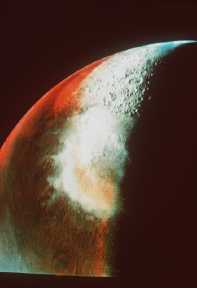This is an image of Mars.
Click on image for full size
Image from: NASA
Theories about Martian water & Climate
- 1.) Since warm weather is needed for the formation of the river channels & floods, episodes of warm climate caused floods, releasing water into the atmosphere and further contributing to the warmer climate via the greenhouse effect. The end result of this process is that *water is returned* to the aquifer by atmospheric condensatation at higher latitudes, and the cycle repeats itself in the next episode of warm climate.
- 2.) flooding causes a *permanent* transfer of water to low areas.
These theories leave some questions unanswered. How do we verify which of these ideas is correct? Further
exploration of Mars would help clarify the answers. For example, digging at low areas to find the thickness of ice deposits.
What are the implications of these theories for the possibility of life on Mars? We know there is water below the surface of Mars, and we also know that life survives in deep water systems.
You might also be interested in:
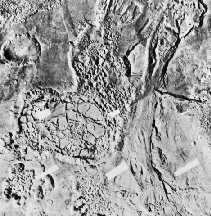
Separate from the Martian outflow channels, or the river valley networks, are large Martian lakes (600 km, or ~1000 miles across) which exhibit evidence of a periodic and catastrophic release of water
...more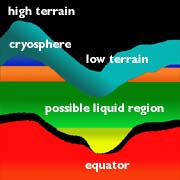
The unusual global geography of Mars helps to explain the fact that water has been drawn from the southern hemisphere to the northern hemisphere of the planet through all of Martian history (that is, from
...more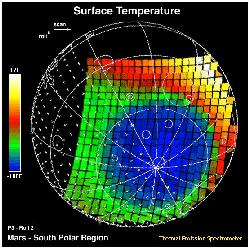
This image shows how cold the surface of Mars can be. The temperature data is from the Mars Global Surveyor mission. The scale to the left shows that purple regions are the coldest, about -170 degrees
...more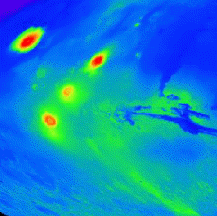
On this map of Mars, the lightly cratered Tharsis Ridge is shown, as well as the heavily cratered Martian highlands (near the bottom of the picture), and Valles Marineris to the right. The volcanoes are
...more
The Martian geography is one of high altitudes at high southern latitudes and low altitudes at low latitudes. The ground is less frozen at low latitudes because it is warmer and water can evaporate. Thus,
...more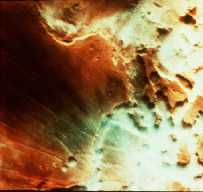
This is an image of fog in a Martian canyon. The presence of fog provides evidence of water, and a water cycle on Mars. More fog has been seen in images returned by Mars Global Surveyor of the south polar
...more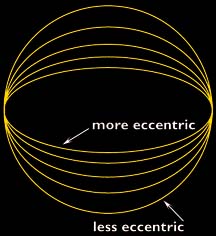
The Martian climate is more influenced by the shape of the Martian orbit than the climate of the Earth is influenced by the shape of the Earth's orbit. The orbit of Mars is more elliptical than that of
...more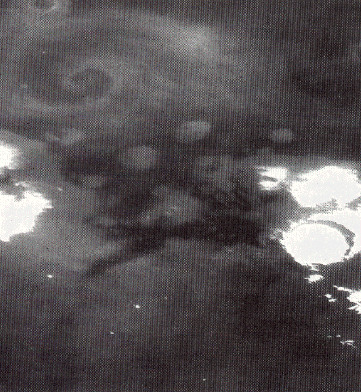
This is an image of a storm moving across the Martian terrain. The camera is looking down upon the storm and the storm front forms a spiral pattern, the same way terrestrial storms are presented on the
...more


